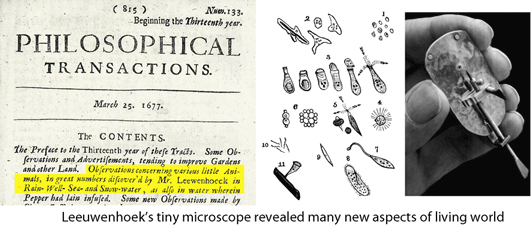Knowing the unknowable
350 years ago Anthony van Leeuwenhoek explored the living world around (and within!) him using tiny, powerful, single lens microscopes. He discovered “tiny animacules” including what we now know as protozoa and bacteria, and detailed structures of plant and animal tissues. In a similar way, DNA study can reveal features of the living world that would otherwise remain unknown.
In July 2010 Deep-Sea Research (not open access) investigators from National Institute of Water and Atmospheric Research, New Zealand, report on what deepwater sharks eat. Dunn and colleagues analyzed stomach contents of 194 sharks from 6 species (14-50 individuals per species) collected in bottom trawls on the Chatham Rise, a relatively shallow area and important fishing ground that extends 1000 km east of New Zealand, at depths of 200-800 m (note: at these depths ocean is nearly dark and does not support photosynthesis). FYI, the sharks studied are Kitefin shark (Dalatias licha), Deepwater spiny dogfish (Centrophorus squamosus), Roughskin dogfish (Centroscymnus owstonii), Deepwater dogfish (Centroselachus crepidater), Lord Plunket’s shark (Proscymnodon plunketi), and Eastern school shark (Galeorhinus galeus).
Perhaps related to the trawl capture method, the individual sharks were relatively small, ranging from 0.38 – 1.6 m depending on species. Prey items were first subject to morphologic identification, and DNA barcoding (using standard primers for full-length 650 bp COI barcode) was performed only if items were visually unrecognizable. Of the 118 sharks with non-empty stomachs, 43 (36%) had prey identified by morphology alone, 28 (24%) by DNA alone, 37 (31%) by both, and in 10 (8%) no items were identifiable by either method. In addition to a variety of fish, predominantly Hoki (Macruronus novaezelandiae) , the most abundant and commercially most important fish on the Chatham Rise, prey items included other shark species, shrimp, octopus, and squids.
In this report, Dunn and colleagues describe what sharks living in near-darkness in the deep ocean eat. Absent DNA, most of this information would be unknowable. The authors conclude that “DNA barcoding can be used to identify prey, and can greatly increase the rate of data accumulation,” noting “the current cost of survey time vastly outweights that of DNA barcoding of prey, making DNA barcoding a cost-effective way of increasing sampling rate”.
This entry was posted on Friday, August 27th, 2010 at 3:21 pm and is filed under General. You can follow any responses to this entry through the RSS 2.0 feed. Both comments and pings are currently closed.
